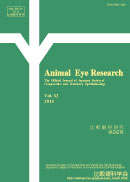Volume 32
Displaying 1-8 of 8 articles from this issue
- |<
- <
- 1
- >
- >|
Special Lectue
-
Article type: Special Lectue
2013Volume 32 Pages 1-2
Published: December 27, 2013
Released on J-STAGE: March 28, 2015
Download PDF (504K)
Review
-
 Article type: Review
Article type: Review
2013Volume 32 Pages 3-13
Published: December 27, 2013
Released on J-STAGE: March 28, 2015
Download PDF (621K)
Original Report
-
Article type: Original Report
2013Volume 32 Pages 15-21
Published: December 27, 2013
Released on J-STAGE: March 28, 2015
Download PDF (753K)
Brief Note
-
Article type: Brief Note
2013Volume 32 Pages 23-28
Published: December 27, 2013
Released on J-STAGE: March 28, 2015
Download PDF (692K)
Brief Note
-
Article type: Brief Note
2013Volume 32 Pages 29-33
Published: December 27, 2013
Released on J-STAGE: March 28, 2015
Download PDF (599K)
Brief Note
-
Article type: Brief Note
2013Volume 32 Pages 35-41
Published: December 27, 2013
Released on J-STAGE: March 28, 2015
Download PDF (613K)
Case Report
-
Article type: Case Report
2013Volume 32 Pages 43-47
Published: December 27, 2013
Released on J-STAGE: March 28, 2015
Download PDF (580K)
Case Report
-
Article type: Case Report
2013Volume 32 Pages 49-54
Published: December 27, 2013
Released on J-STAGE: March 28, 2015
Download PDF (629K)
- |<
- <
- 1
- >
- >|
